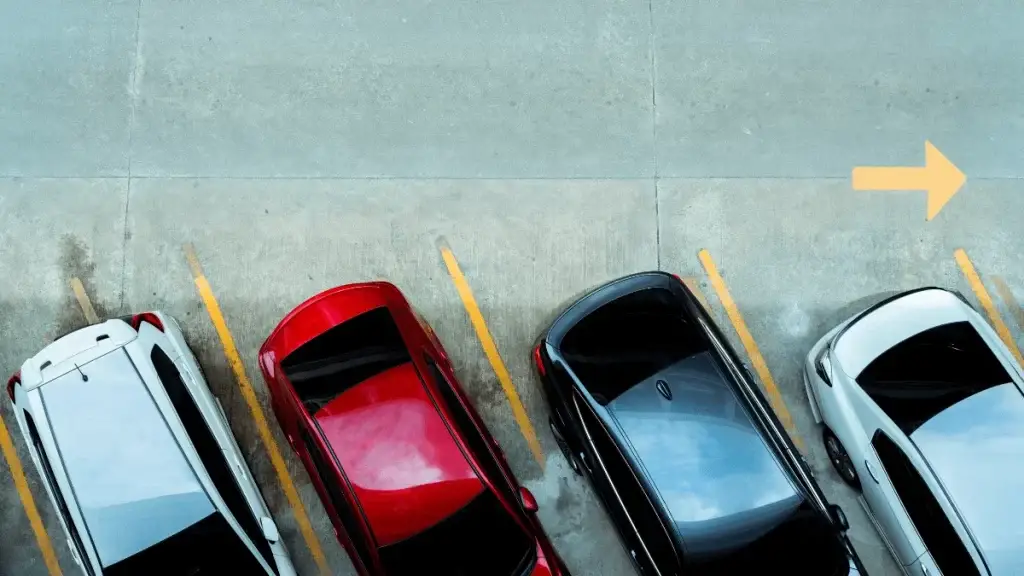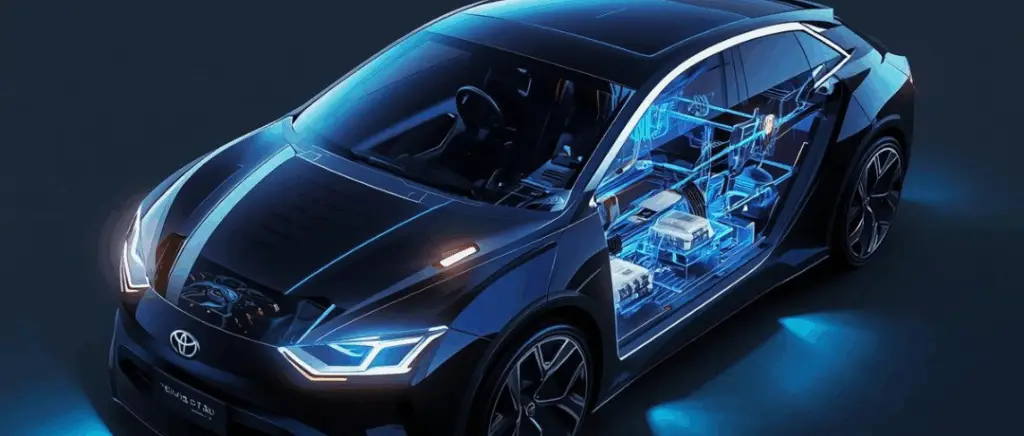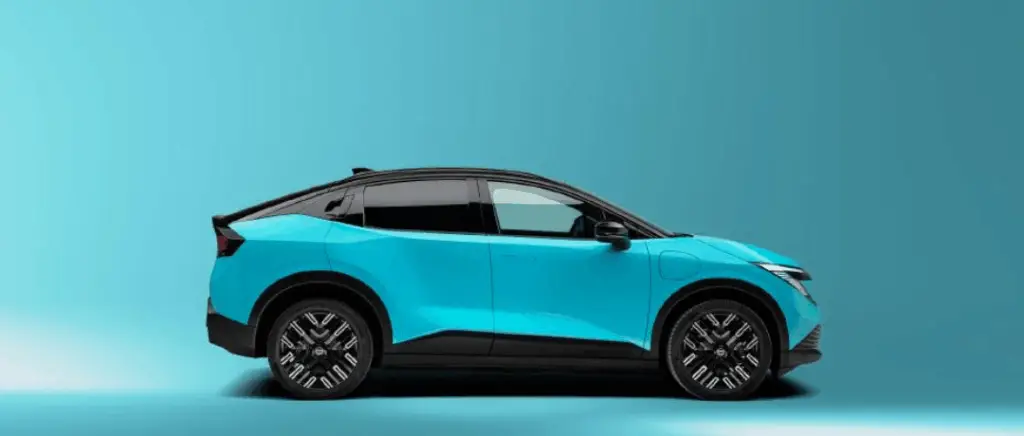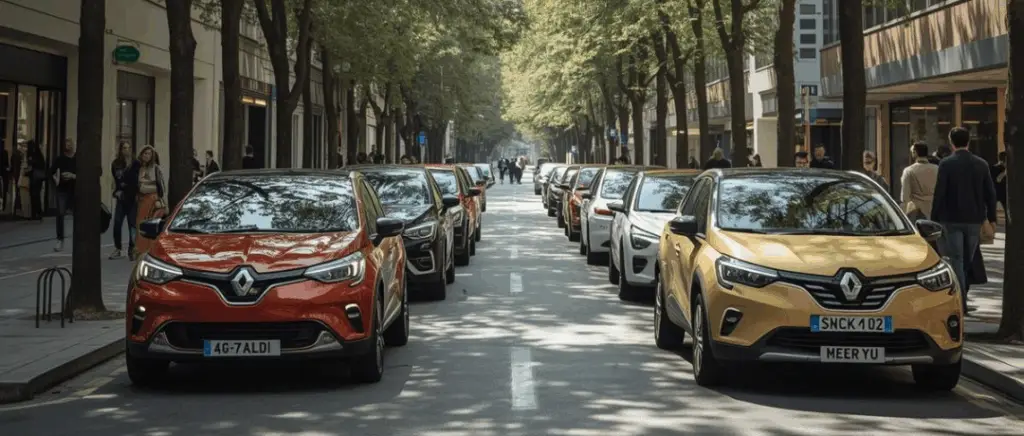Discover several models of electric vehicles that can be delivered quickly!
The vehicles are tested in what is known as an "automobile driving cycle". In other words, the vehicles are tested under more or less realistic driving conditions on chassis dynamometers, as shown in the image below:
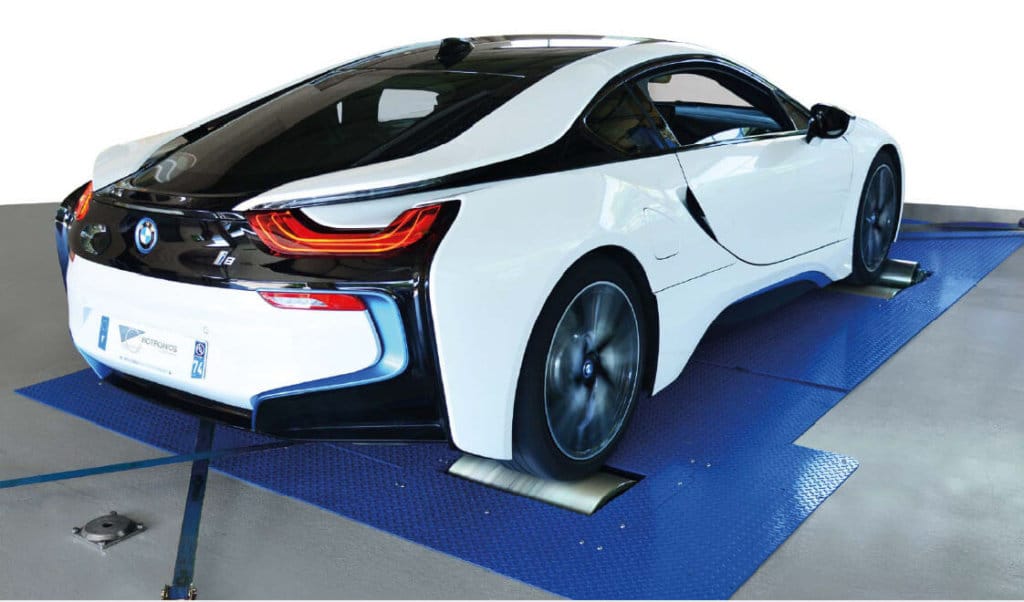
In July 1973, a European directive introduced the use of the NEDC cycle (New European Driving Cycle). Until 2018, this cycle was used to measure fuel consumption and pollutant emissions by vehicles. In March 2020, the new WLTP standard (Worldwide Harmonised Light vehicles Test Procedure) has begun.
Before you start: What is the new WLTP standard?
The WLTP (Worldwide Harmonized Light Vehicle Test Procedure) is a new standard for measuring fuel consumption and emissions of CO2 and other pollutants by vehicles. It replaces the old procedure, the NEDC (New European Driving Cycle), which has been in use since 1973 and is considered to be too far removed from vehicles' real CO2 emissions.
The WLTP standard has a dual purpose:
- Calculate a vehicle's fuel consumption and emissions in terms of CO2
- To authorise its arrival on the automotive market. The vehicle must pass the procedure to be approved.
The results are closer to real-life use on the road. If the vehicle does not meet the standards, it will not leave the factory and adaptations will have to be made.
How does a WLTP test work?
Like the NEDC, the WLTP protocol is carried out in a laboratory on a chassis dynamometer, but is much more precise than its predecessor.
However, the driving sequences differ to reflect the real conditions in which the vehicles are used:
| WLTP | NEDC | |
|---|---|---|
Test duration | 30 minutes | 20 minutes |
Distance travelled | 23.25 km | 11 km |
Average speed | 46.5 km/h | 34 km/h |
Maximum speed | 131 km/h | 120 km/h |
Type of driving | Gear changes adapted to the vehicle | Similar gear changes for all vehicles |
Driving location | 52 % urban 48 % non-urban | 66 % urban 34 % non-urban |
Temperature | 14°C at start then 23°C | 14°C at start then 23°C |
Other | Taking account of the weight of options | - |
As the tests are different, the results differ between the NEDC and WLTP cycles, particularly in terms of CO2 emissions.
The more precise WLTP standard offers better environmental protection. CO2 emissions measured under WLTP are 24% to 31% higher, depending on the type of vehicle. Challengesbut also much closer to reality.
What exactly is the old NEDC standard?
The NEDC is a car driving cycle consisting of a 20-minute simulation (19 minutes and 40 seconds to be precise). It is divided into 2 parts, each consisting of accelerations and decelerations as well as constant speed stages.
1. Driving in an urban environment
The urban cycle is divided into 4 identical sequences, each lasting exactly 3 minutes and 15 seconds. The vehicle performs 3 successive accelerations, the first from 0 to 15 km/h, the second from 0 to 32 km/h and the last from 0 to 50 km/h. These accelerations are therefore particularly low, especially given the acceleration capabilities of current vehicles and the acceleration of drivers in real-life conditions.
2. Driving in a non-urban environment
The extra-urban cycle follows the urban cycle. It also involves slow acceleration, but also maintaining certain specific speeds. This cycle lasts precisely 6 minutes and 40 seconds.
While in the urban cycle, only the first 3 gears are used, in the extra-urban cycle, the 4ᵉ gear is used in particular for the 50 km/h stop, which this time lasts 70 seconds. The top speed is set at 120 km/h which corresponds to the motorway speed limit in most European countries.

What are the limits of the NEDC?
As mentioned above, the NEDC test cycles do not really reflect the acceleration of vehicles when used by drivers. The weak acceleration contrasts with the actual use made by drivers. The simulation is therefore not faithful and does not reflect fuel consumption in particular.
What's more, The NEDC tests do not take into account the impact of vehicle equipment. In fact, equipment such as air conditioning, radio, headlights, heating, etc. all have an influence on the vehicle's actual fuel consumption. When a driver uses his car, he also uses its equipment. So once again, the simulation does not accurately reflect how the vehicle is used in real-life conditions.
Finally, the NEDC includes a number of stages where the vehicle is driven at a steady speed. To optimise the NEDC results, manufacturers simply need to optimise the gear ratios at these stages. However, driving is very rarely done at a steady speed. Drivers are often forced to downshift, which increases the vehicle's fuel consumption. Once again, the simulation provided for in the NEDC is not faithful to the actual use of the vehicle and therefore cannot provide relevant results on fuel consumption and pollutant emissions.
It is because of this significant gap between laboratory results and actual fuel consumption and pollutant emissions that the European Union and other countries around the world, such as India and Japan, have decided to introduce two new test cycles that are more closely aligned with actual vehicle use: the WLTP (World harmonized Light vehicle Tis Procedure) and RDE (Real Driving Emissions).
Monday to Friday
9am - 12.30pm - 2pm - 7pm
What are the differences between the WLTP standard and the NEDC cycle?
The WLTP standard differs from the NEDC standard on a number of points, in order to be more faithful to actual vehicle use.
Longer test duration
While the NEDC lasts just under 20 minutes, the WLTP lasts 30 minutes. The NEDC is divided into 2 phases, whereas the WLTP is divided into 4 more dynamic phases, with more acceleration and deceleration. The split between urban and extra-urban driving is also more balanced.
Longer distances covered
Over the entire test cycle, the vehicle travels 11 km under the NEDC compared with 23.25 km under the WLTP standard.
Reduced downtime
Over the entire cycle, the time spent at a standstill represented 25% of the cycle under the NEDC. This will fall to 13% under the WLTP standard.
Higher average speed
The vehicle's average driving speed under the NEDC was just 34km/h over 11km. Under the WLTP standard, the average speed rises to 46.6 km/h over 23 km.
Higher maximum speed
The maximum speed achieved by the vehicle under the NEDC was limited to 120 km/h. Under the WLTP, this maximum speed rises to 131km/h.
Tests carried out in more realistic climatic conditions
Under the NEDC, measurements were taken at a temperature of between 20° and 30° throughout the test. Under the WLTP standard, measurements must be taken at 14° at start-up and then at 23°.
Gear changes adapted to vehicles
While gear changes were similar for all vehicles under the NEDC, the new WLTP standard adapts gear changes to the vehicle being tested. The range of driving situations is therefore extended (motorway, dual carriageway, urban and suburban driving, etc).
Weight and equipment taken into account
Whereas the NEDC did not take into account the weight or the impact of equipment such as air conditioning, heating or headlights on the vehicle's fuel consumption, the WLTP will adjust the results, depending on the model, by taking into account the influence of this equipment.
Main differences between the two test procedures.
NEDC | WLTP | |
Test cycle | Single test cycle | A dynamic test cycle that is more faithful to how the vehicle is used in real-life conditions. |
Test duration | 20 minutes | 30 minutes |
Distance travelled | 11 km | 23.25 km |
Driving sequences | 2 sequences: urban driving (66%) and extra-urban driving (34%) | 4 sequences: motorway, dual carriageway, urban, suburban. Urban driving 52%, extra-urban driving 48%. |
Average speed | 34 km/h | 46.5 km/h |
Maximum speed | 120 km/h | 131 km/h |
Taking options into account | The NEDC does not take into account options and their impact on pollutant emissions and fuel consumption. | The WLTP takes into account the different vehicle equipment that can influence pollutant emissions and fuel consumption. |
Gear change | Gear changes are pre-determined and fixed | The points of passage are determined according to the characteristics of the vehicle |
Test temperature | Measurements are taken at temperatures ranging from 20° to 30°. | Measurements are taken at 23° and then corrected to 14° for CO2. |
The RDE complements the WLTP standard
The WLTP standard is supplemented by the RDE (Real Driving Emissions). It consists of a test under real driving conditions to measure CO2 emissions. A measuring device is placed on the vehicle throughout the test.
The vehicle is driven for a maximum of 2 hours. The route is divided into 3 zones:
- Urban. With a maximum speed of 60 km/h
- Extra-Urban. With a maximum speed of 90 km/h
- Motorway. With a maximum speed of 145 km/h
For this test, the outside temperature must be between -7° and 35° and the altitude must not exceed 1300m.
The RDE 2 allows you to control the rate of nitrogen oxide emissions produced by diesel vehicles.
Why are we talking about this today?
If the emissions measured for a vehicle are higher, then there are many consequences, particularly for professionals:
- Calculation of the bonus/ecologic malus
The calculation of the ecological bonus/malus varies according to the vehicle's CO2 emissions. The ecological penalty is a tax imposed on the driver if he or she emits too much CO2 (grams per kilometre).
This calculation was based on the results of the NEDC standard.
This changed on 1 March 2020 and is done with WLTP results.
To date, vehicles emitting less than 138g/km have no environmental penalty.
It then varies from €50 for 138g/km to €20,000 for 216g/km and more.
By switching to the WLTP standard, polluting vehicles will have to pay a much higher ecological penalty than before.
Tax on the use of passenger vehicles for economic purposes is an annual tax paid by all profit-making companies. These companies must have their registered office in France or an establishment in France, own, use or hire private cars (for passenger transport) or multi-purpose cars (for passenger transport).
This tax is calculated on the basis of the vehicle's age, tax rating and CO2 emissions.
By switching to the WLTP standard, the tax on the use of passenger cars for economic purposes will be much higher for professionals, and in particular for fleets of passenger cars.
SUV example : rate of 115 g/km (NDEC) to 145 g/km (WLTP): the Tax on the Use of Passenger Vehicles for Economic Purposes increases from €517 to €1,885.
By switching to the WLTP standard, the annual cost of a vehicle for a company increases by €1,747 per year.
What are the practical consequences for drivers?
The switch from the NEDC to the WLTP standard will result in an increase of 34% on CO2 emissions results. The This means a higher ecological penalty, which is problematic for drivers.
The WLTP standard is likely to persuade both professional and private users to switch to clean vehicles in the years to come if the tax system does not adapt to the new results.
Soaring TCO
Le TCO (Total Cost of Ownership) is a very important piece of data for a company, as it enables the overall cost of a vehicle to be estimated. The TCO includes :
- Financing (purchase, mileage allowance, long-term hire, etc.),
- Services (insurance(e.g. tyres, tyres, servicing, maintenance, telematics, etc.),
- Fuel and taxation (bonus/malus, benefits in kind, etc.),
- Other expenses (repair costs, parking, company car tax, etc.).
By switching to the WLTP standard, a company's TCO for polluting vehicles rises sharply due to the increase in the ecological penalty and the tax on the use of passenger vehicles for economic purposes.
This has more serious consequences when you have a fleet of polluting vehicles.
Read the file : TCO (Total cost of ownership): how can it be calculated and optimised?
What's the solution for my business?
The aim of the changeover to the WLTP standard is to provide information on the vehicle's emissions.autonomyThis means that we can provide more accurate, more realistic data on consumption and emissions.
There is also the motivation to renew the vehicle fleet in favour of vehicles with low CO2 emissions. The LOM law encourages this change of vehicle fleet by also imposing a number of measures toincrease the number of clean vehicles in vehicle fleets companies :
- Those with a total fleet weight of less than 3.5 tonnes will have to acquire cleaner vehicles when renewing their fleets each year; with CO2 emissions of less than 60 g/km.
- Companies with more than 100 vehicles must have 10% of their fleets in electric vehicles by January 2022, 20% by January 2024, 35 % by 2027 and 50 % by 2030.
The main solution is to switch to very low-emission vehicles, particularly electric vehicles, when renewing vehicles or fleets.
Don't forget that when you buy a new vehicle, you need to think about its value at the time of resale. A polluting diesel-powered vehicle will be increasingly difficult to resell on the second-hand market, especially as diesel will be banned in France by 2030.
In a nutshell
The WLTP standard replaces the old NEDC vehicle type-approval cycle. The latter was not faithful enough to the actual use of the vehicles, and did not provide relevant measurements of fuel consumption and pollutant emissions, particularly CO2.
The new WLTP standard has an impact on vehicle TCO because of vehicle taxation, given the rise in CO2 emission figures.
Since 2021, with the CAFE (Corporate Average Fuel Economy) standard, manufacturers have been obliged to innovate for the benefit of their customers by offering models with the correct CO2 emissions levels.
Discover the electric cars available from Beev
